China Feed and Livestock Dashboard: March 2023
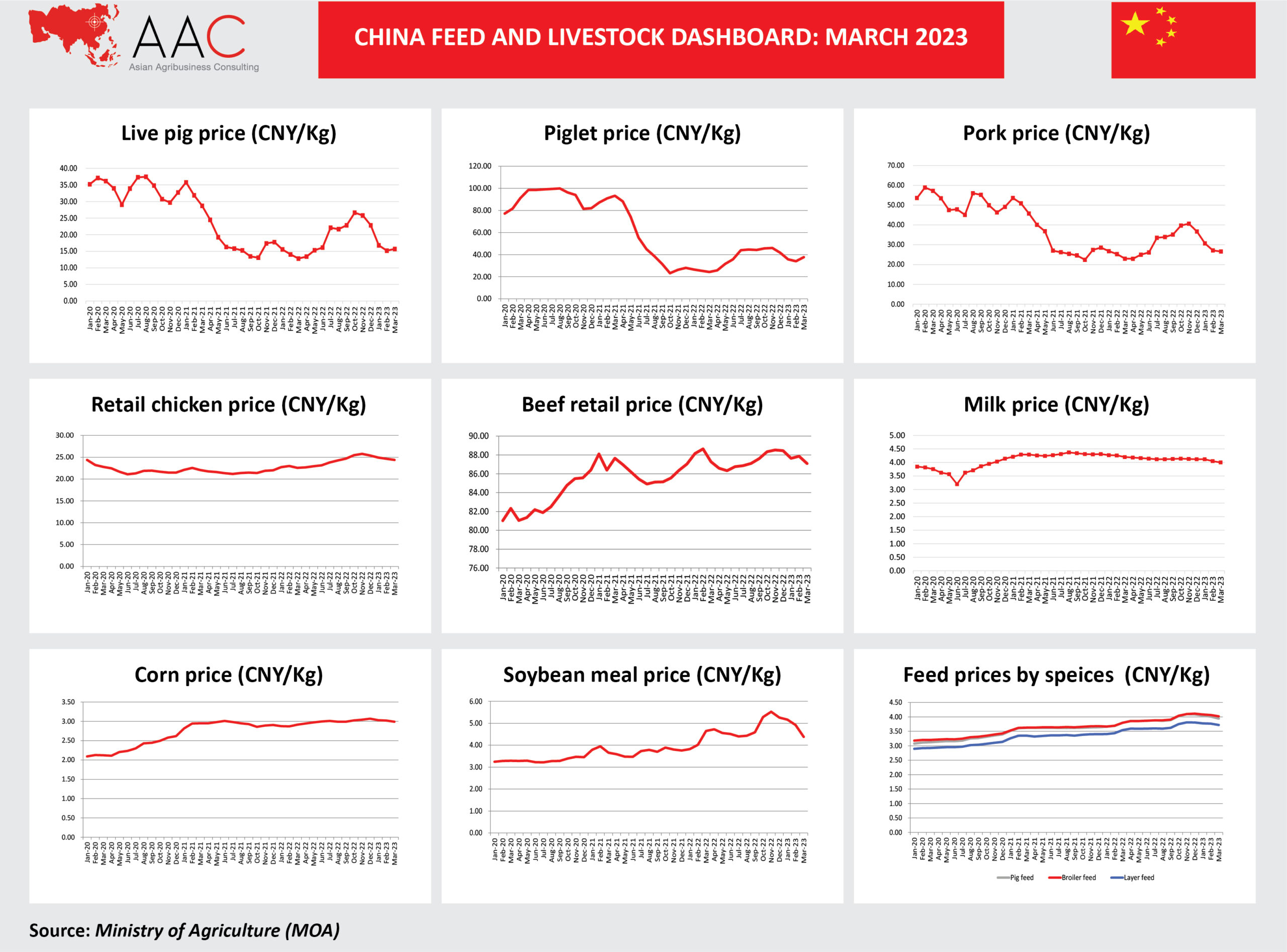
China Feed and Livestock Dashboard: April 2023
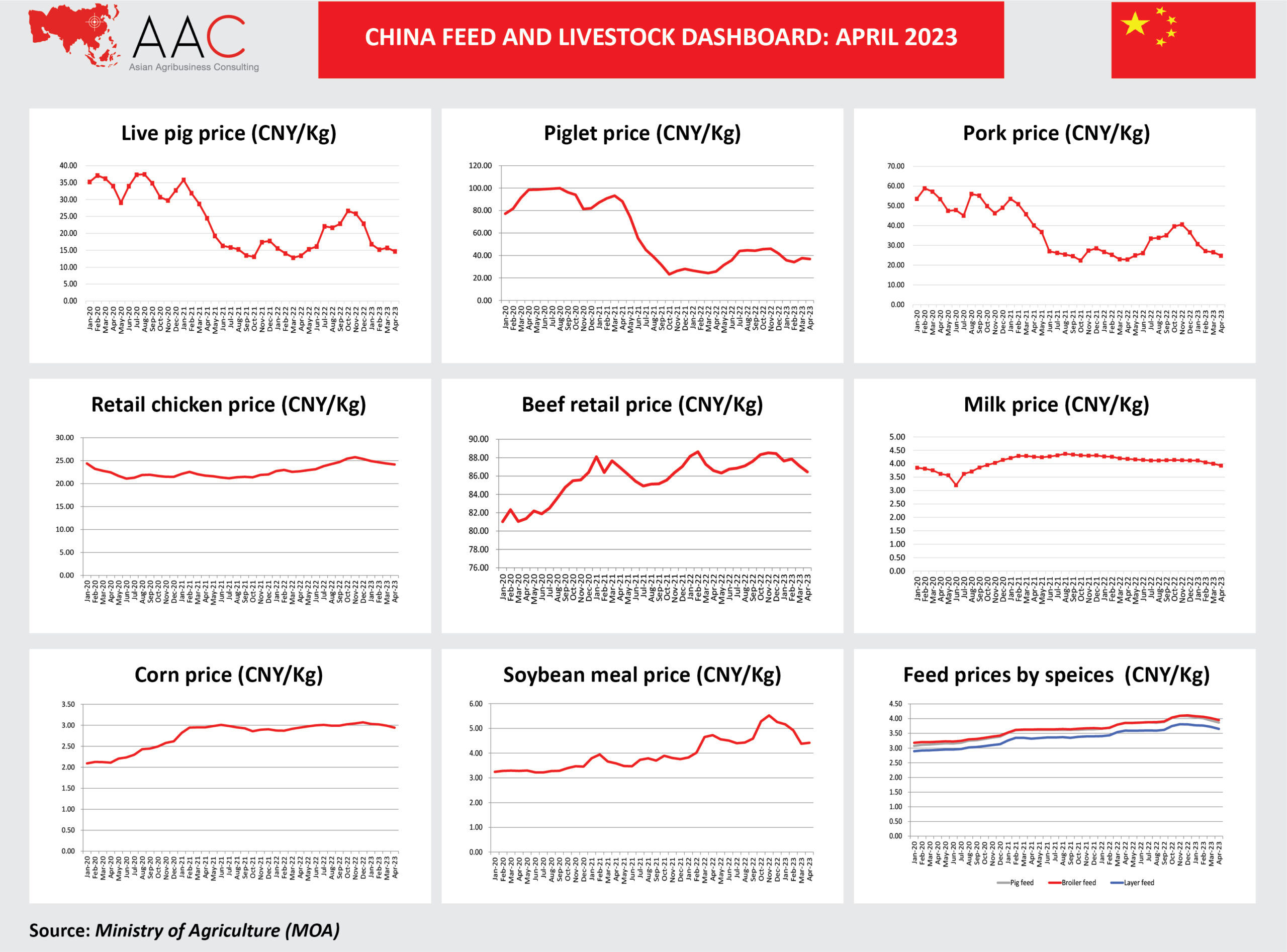
Vietnam Feed and Livestock Dashboard: April 2023
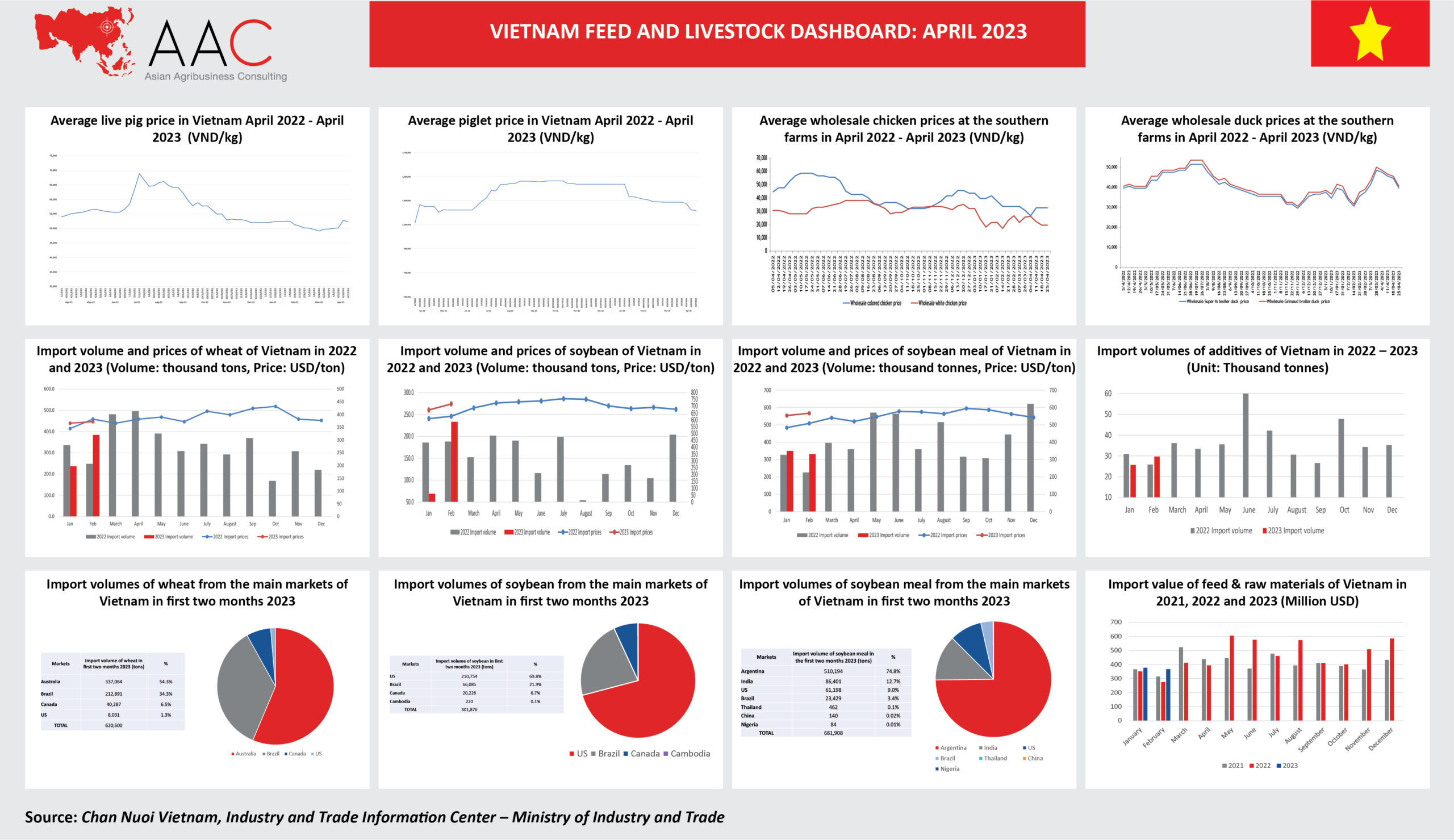
A healthy calf from Russia’s cloned cow
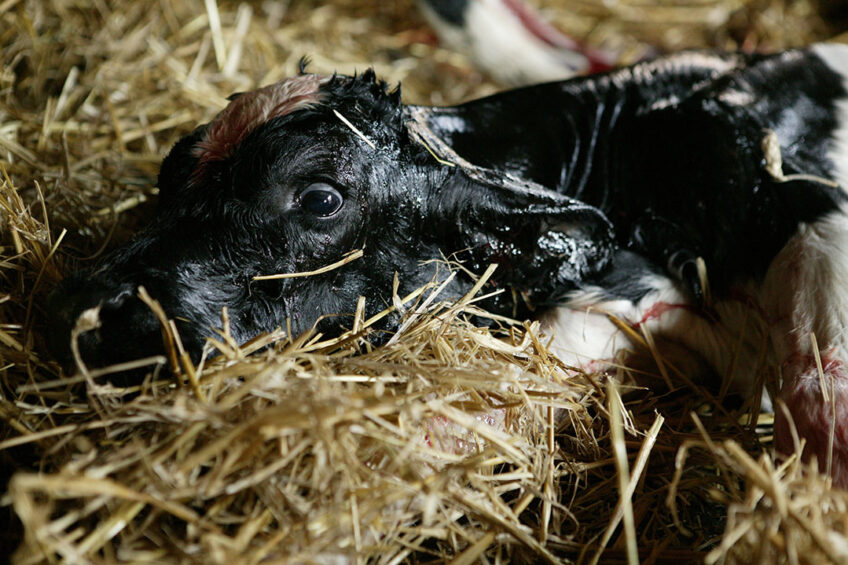
A group of scientists from the Russian Skoltech Institute cloned the cow in April 2020, altering genes in such a way as to remove proteins responsible for beta-lactoglobulin. Generic calf photo: Michel Zoeter.
Russia’s first cloned cow gave birth to a healthy calf at the end of last year, marking a significant milestone for the development of gene editing technologies in the country’s livestock industry.
A group of scientists from the Russian Skoltech Institute cloned the cow in April 2020, altering genes in such a way as to remove proteins responsible for beta-lactoglobulin. The researchers used CRISPR/Cas9 technology, cloning the cow using somatic cell nuclear transfer (SCNT). The target was to create a cow to produce milk fit for consumers with lactose intolerance.
Studying reproduction system
The scientists explained that the gene-editing technology could have a broad application, as changing the genome could help boost yields or make animals more prone to heat stress. Still, confirming that the cow could have healthy offspring was essential.
“Genome-editing technology can only be developed when cloned animals are capable of giving birth to viable offspring. That is why the birth of the first calf by a cloned cow is a great achievement for Moscow-region scientists. The animals are well and are under round-the-clock supervision by veterinarians,” the press service quoted Georgy Filimonov, deputy prime minister of the Moscow region in charge of the agriculture and food ministry, as saying.
“Somatic cell nuclear transfer (SCNT) with the use of genetically modified somatic cells is seen today as a key technological platform for genome editing of cattle and other livestock. That is why specialists are conducting research to improve the critically important stages of the technological chain,” the ministry said.
Improved animals
Petr Sergiev, a professor at Skoltech Institute and one of the study’s authors, said that after the cloned cow gives birth to offspring, the scientists planned to proceed to the next stage: inseminating a herd of several dozen cows with embryos with the edited genes.
Sergiev also said that “genomic editing methods and reproductive technologies will soon lead to the creation of farm animals with improved properties. This technology should help create animals with improved characteristics, such as disease resistance.”
The scientists said they created a new breed of cows. However, it will be years before it can be available to Russian farmers, they added. Currently, no legislation regulates the sales of products from animals with altered genes in Russia. On the other hand, the country has a strict law regulating the turnover of food with genetically modified organisms.
Avian influenza reported in Argentina and Uruguay
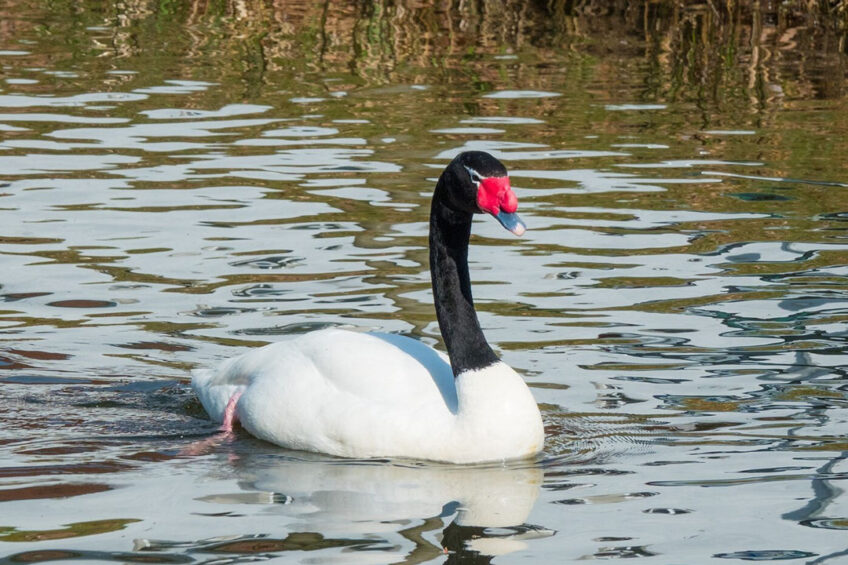
Argentina and Uruguay confirmed their first cases of avian influenza amongst wild birds on 15 February, reinforcing that the disease is advancing in South America.
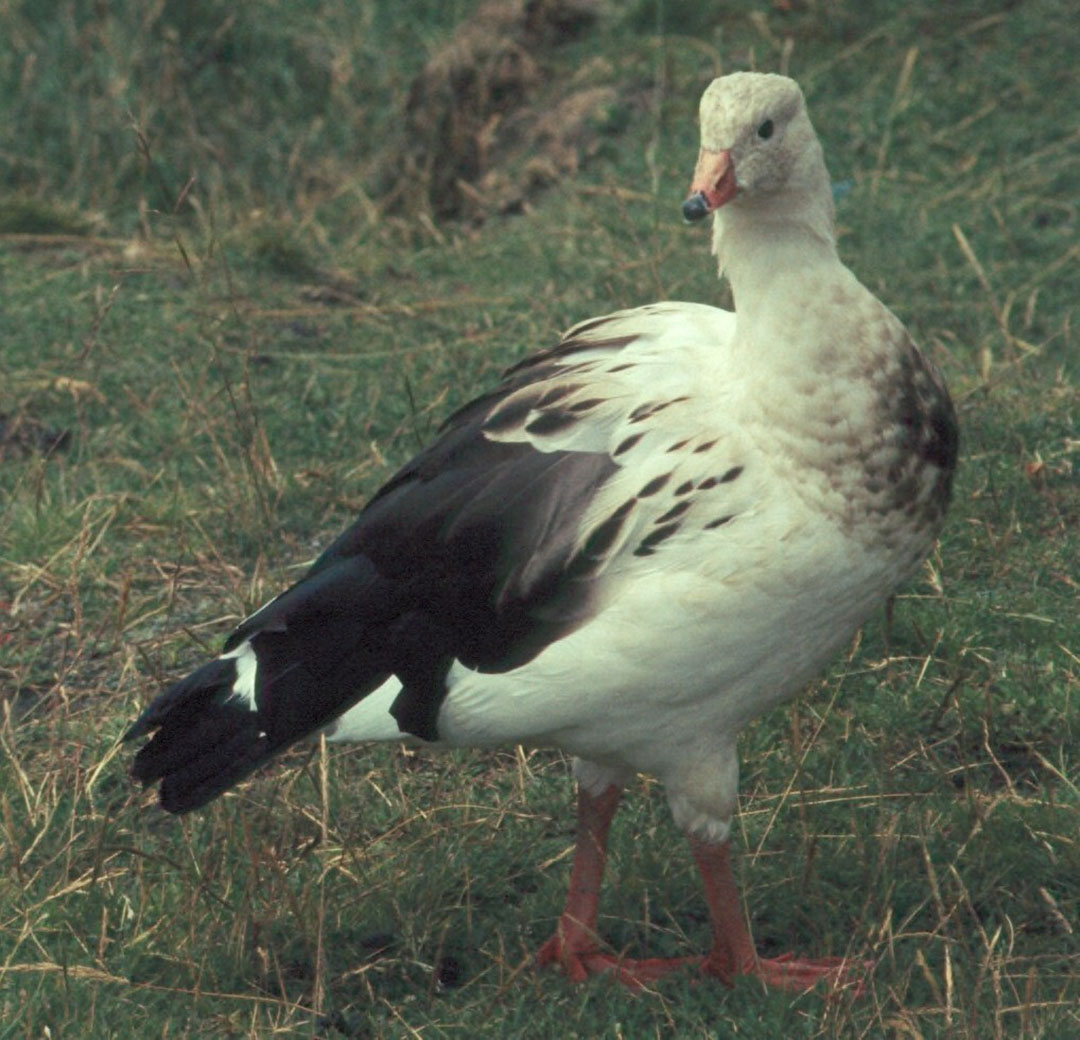
All countries in South America have confirmed cases of avian influenza, with the exception of Brazil, Guyana and Suriname. However, the proximity of productive regions in Brazil and the absence of major geographic barriers further increase probabilities of the virus reaching the largest chicken exporter in the world.
In the Uruguayan case, the virus was identified in a black-necked swan near Lagoa Garzón in the south coast of the country. In Argentina, the disease was identified in the province of Jujuy in Andean geese.
According to Uruguay’s El Observador newspaper, authorities from the Ministry of Livestock, Agriculture and Fisheries are assessing the situation and appropriate measures will be taken.
An emergency meeting
Meanwhile, Argentina’s secretary of Agriculture, Livestock and Fisheries, Juan José Bahillo, called an emergency meeting on the matter.
“The presence of the virus in Argentina puts all our services on alert, but it does not surprise us. We have already been working with different prevention organisations and territorial coverage to control the problem,” said the secretary.
According to him, the most common way of entry is through migratory birds, which is difficult to control. “Bird migrations brought the disease-causing virus from the northern hemisphere,” he adds.
Bird flu has wiped out millions of birds in Europe, North America and Asia in the months before its arrival in South America.
Brazil is on alert
In Brazil, after confirmation in neighbouring countries, the Associação Brasileira de Proteína Animal (ABPA) issued a note in which it states that “it is monitoring the actions”.
The disease is devastating for birds and, according to a survey, could cause €2.4 billion in damage to the Brazilian poultry sector.
The Brazilian entity said it was in direct contact with the Asociación de Productores Avícolas Sur, the regional poultry representative, along with members of other organisations in Latin America.
The objective is, together with the Ministry of Agriculture and Livestock, to monitor the situation.
Brazil remains free of avian influenza
In the note, ABPA reinforces the importance for Brazil – which remains free of avian influenza – of keeping biosecurity protocols, especially in the protection of its commercial herds.
“It is worth remembering that the situation registered in Uruguay (with wild birds) is an example of a case that would not suspend trade and exports of poultry products, in accordance with recommendations established by the World Organisation for Animal Health,” says the text.
Understanding the pathways of antibiotic resistance genes
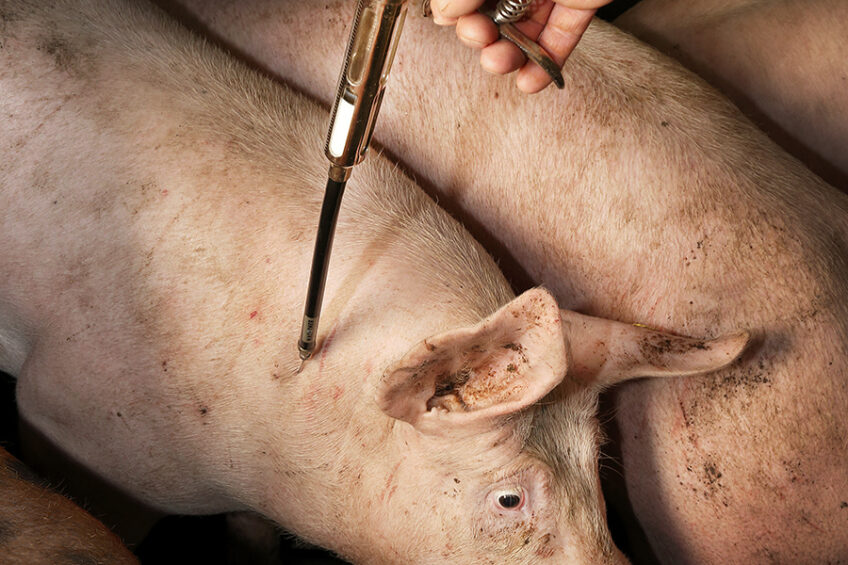
In swine farming, antibiotics are mainly used for prophylactic and growth promotion purposes. Photo: Hans Prinsen fotografie Hans Prinsen
Swine farming is a fundamental source of environmental antibiotic resistance genes (ARGs) worldwide. Understanding the pathways of ARG propagation into the environment is critical to develop strategies to mitigate environmental and public health impacts of antibiotic resistance.
Infections that are resistant against antibiotics are a universal concern. They cost up to $ 100 trillion per year in health care and global mortality will reach 10 million animals by 2050.
Gut microbiota acquire and maintain ARGs
In swine farming, antibiotics are mainly used for prophylactic and growth promotion purposes. They are consistently detected in pigs’ guts at low and sub-lethal concentrations. As a result, gut microbiota acquire and maintain ARGs and enhance the abundance of resistant bacteria.
The excretion of ARGs into the soil and water is an emerging environmental, human health, and operational concern which limits the number of effective antibiotics for therapeutic purposes.
Swine waste has a greater diversity and a higher abundance of ARGs compared to other livestock waste
Antibiotic resistance mechanisms
Major resistance mechanisms include antibiotic deactivation, extrusion through efflux pumps, and protection of targets by specific proteins. The ARGs confer resistance to several major classes of antibiotics including tetracyclines, sulfonamides, β-lactams, macrolide-lincosamidstreptogramin B, aminoglycosides, fluoroquinolone, quinolone, florfenicol, chloramphenicol, and amphenicol.
Diversity and abundance of ARGs
Swine waste has a greater diversity and a higher abundance of ARGs compared to other livestock waste. This is due to a more intensive use of antibiotics for therapeutic, prophylactic, and metaphylactic purposes. Pigs also receive higher dosages early in life.
In addition, the abundance of ARGs in pig waste varies among countries, with China being at the top of the list as the largest producer and consumer of antibiotics. Site-specific physical and chemical conditions within countries affect the abundance of ARGs propagation and attenuation dynamics, as well.
ARGs spread from pigs to humans
Antibiotic-resistant bacteria and ARGs transferr from pigs into the soil through land application of manure and waste water irrigation. They spread to aquatic environments through waste water discharge and runoff. Intracellular and free ARGs in the soil and ground water transfer to indigenous bacteria through horizontal gene transfer. Then, antibiotic-resistant bacteria reach and colonise in humans causing acute or chronic infections.
Propagation of ARGs in a new environment depends on the survival, proliferation, maintenance, replication, and gene transfer by the original host and the probability of gene acquisition by new hosts. The growth rates of antibiotic-resistant bacteria, substrate concentrations, and the presence of toxic compounds impact the occurence of ARGs in the environment.
Oral ingestion of contaminated food, waste, residual waste from occupational exposure or contaminated environments and inhalation are the pathways by which antibiotic-resistant bacteria reach human gut environments. Factors such as high concentrations and proximity of ARG donors and recipients, temperature, physiochemical conditions, and nutrient availability increase horizontal gene transfer in the human gut and cause multidrug resistance genes occurrence.
ARGs can be removed from manure by conventional waste treatment
Standard manure treatment
ARGs can be removed from manure by conventional waste treatment. The waste is stored in lagoons and then treated through anaerobic digestion or composting and it is separated into solid and liquid streams. The solids are used to fertilise agriculture soils, and the liquid is treated in a bioreactor or is discharged directly to waterbodies without treatment.
Differences in operating temperature, abilities of potential hosts to maintain and transfer ARGs, and properties of the manure affect the abundance of certain types of ARGs. Strategies including manure stabilisation with lime before application, vegetating the soil with appropriate plants, and using land application methods such as incorporation or injection mitigate ARG propagation in the soil.
Supplementing biochar and wheat straw reduces the dissolved concentration of inhibitory residual antibiotics and heavy metals, improves the digestion process and the associated removal of ARGs. Furthermore, thermophilic composting along with additives that reduce the bioavailability of heavy metals is effective in reducing the diversity and abundance of ARGs in manure.
Controlling ARG levels at the source
Strategies including adjusting animal diets to minimise disease occurrence, decreasing human-to-animal contact, optimising waste collection methods, increasing the frequency of waste collection, and creating containment areas for sick animals reduce the spread of disease, and the ARG abundance and diversity at the source.
In addition, halting antibiotic use, preventing conjugation of plasmids carrying ARGs, and promoting resistance plasmid loss decrease the ARG abundance. Using antibiotic alternatives such as antimicrobial peptides, probiotics, and prebiotics is a promising method for selective microbial control. Regulations and policy for manure storage and disposal practices should be established to reduce ARGs discharge into receiving environments. In addition, disinfection processes such as chlorination and UV disinfection remove ARGs from drinking water and municipal wastewater.
Further research
Further research is needed to develop validated models to quantitatively assess the impact of ARG dissemination from pigs on human health.
Impact of initial gut microbiota colonisation on piglet performance
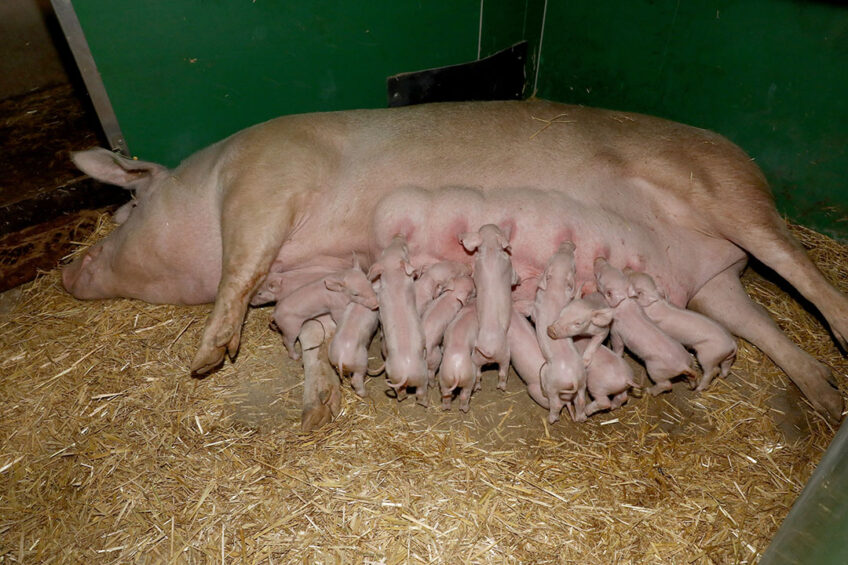
Research shows that the initial colonisation of gut microbiota in piglets occurs at least within the immediate prenatal period. Photo: Henk Riswick
Piglets encounter various events affecting the development of their gut microbiota. It is essential to identify when and how to establish and maintain the optimum piglet gut microbiota to have the best production outcomes.
What are gut microbiota?
Gut microbiota is a collection of bacteria, archaea, fungi, and viruses associated with an essential role in many body processes. Gut microbiota impact performance and manipulate improvements in feed efficiency and average daily gain. Early-life microbial colonisation is the most important time for shaping gut microbiota.
The sow’s microbiota and the rearing environment influence the piglet’s gut microbiota functionality and composition
Initial microbial colonisation
Research shows that the initial colonisation of gut microbiota in piglets occurs at least within the immediate prenatal period. The sow’s microbiota and the rearing environment influence the piglet’s gut microbiota functionality and composition. They also influence its immune system development, growth, and survival.
Piglet exposure to the sow vagina, its pen environment, and the sow’s antibiotic exposure, dietary treatments, the length of time between sow microbiota modulation and piglet exposure cause some differences between the sow’s microbiota and that of her her progeny.
Oxidative stress affects sow gut microbiota
During late gestation and early lactation, the sows’ metabolic demands increase. This leads to oxidative stress, which impairs energy balance, body condition, and milk production. It also causes negative outcomes for sows and piglets.
In addition, it affects their offspring’s gut microbiota. For instance, the abundance of Bacteroidaceae is associated with higher antioxidant capacity and better litter performance, while the presence of Phascolarctobacterium, Cyanobacteria and Streptococcus are linked with lower piglet performance and higher oxidative stress in sows.
Furthermore, the abundance of Lachnospiraceae, Marvinbryantia and Ruminococcaceae is higher in sows with an increased stillbirth rate and reduced antioxidant capacity. There also is an increase in the abundance of short-chain fatty acid producing and fiber-degrading bacteria such as Ruminococcus, Fibrobacter and Butyricicoccus, and higher concentrations of acetate, propionate, and n-butyrate, in the feces of higher performing sows.
Optimal gut microbiota in sows expose piglets to beneficial bacteria and establish, in them, optimal microbiota
Factors affecting gut microbiota development
Colostrum provides energy, immunity, and diverse bacteria and prebiotic compounds for gut development in neonates. In addition, optimal gut microbiota in sows expose piglets to beneficial bacteria and establish, in them, optimal microbiota. During the peripartum period, a sow’s gut microbiota composition, richness, and diversity alters. Potentially pathogenic bacteria such as Proteobacteria and Fusobacteria increase, whereas potentially beneficial butyrate producing bacteria such as Ruminococcus and Lachnospiraceae decrease. Gut permeability and the plasma endotoxin concentration improve.
Early microbial exposure
Piglet exposure to sow feed in lactation and environmental exposure influence the development of gut microbiota. Early microbial exposure has an integral role in gut microbiota development for piglets. Furthermore, maternal feces affects piglet microbial colonisation and improves piglet growth and survival. Moreover, cross-fostering alters piglet gut and cecal microbiota and improves growth performance.
Antibiotic administration
Early antibiotic administration for pathogen removal is non-selective and affects the commensal microbiota, reduces gut microbial diversity, increases antibiotic resistant bacteria, and leads to enteric dysbiosis. Maternal antibiotic administration has a negative effect on piglet gut morphology, with decreased crypt depth and altered gene expression profiles in the ileum.
Direct antibiotic administration decreases immunological communication. It also increases the expression of chemokine, and toll-like receptors. It decreases the abundance of potentially pathogenic bacteria such as Campylobacter and Pasteurella, and the abundance of potentially beneficial bacteria such as Prevotella and Butyrimonas.
Impact on production
Dietary additives such probiotics, prebiotics, and minerals are used to modulate the piglets’ gut microbiota. They also increase colonisation of beneficial bacteria, and improve health and the production outcome. Bacteria involved in higher performance include Lactobacillus, unclassified Prevotellaceae, and Ruminococcaceae.
Research shows that an increase in Ruminococcaceae in piglets is linked to improved growth during lactation. An increase in the abundances of Prevotella is associated with lower growth rates during lactation but a higher average daily gain after weaning. The increased abundance of Actinobacteria before weaning is a marker for increased post-weaning diarrhea, while increased abundance of Chlamydia and Helicobacter before weaning are markers for healthy and diarrhea-resistant pigs after weaning. A higher abundance of butyrate producing Christensenellaceae is linked with improved growth and reduced E. coli shedding.
Continuous microbial exposure
Gut microbial colonisation in early life is a major determinant of health and production performance. The establishment and development of the gut microbiota in piglets require continuous microbial exposure in neonates. However, the type and form of exposure that is not detrimental to the piglet in the post-weaning period must be considered.
Eastern Europe: Falling prices puts dairy sector at risk
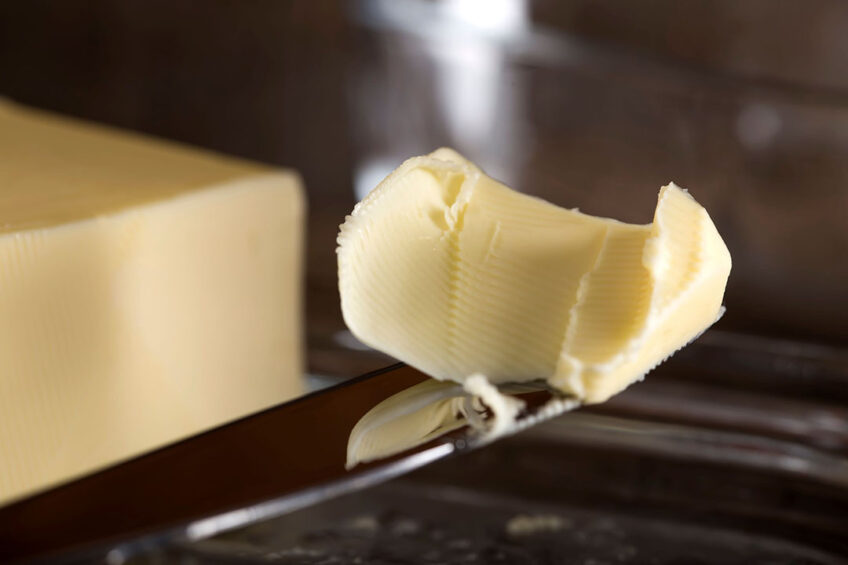
A drop in retail dairy prices in recent months has jeopardised milk processing plants and farmers in Poland and Lithuania, according to sources.
Recently, Poland’s largest supermarket chains have started offering butter at a PLN3 (US$0.68) per package, which is the lowest level seen in years. In 2022, the Polish dairy market saw a 20% rise in butter price, and in some product categories, the price exceeded PLN10 (US$2.26) per package. By lowering retail prices, supermarkets hamper margins along the entire supply chain, dairy companies warned.
“Nobody thinks about how such prices will affect farmers,” Waldemar Broś, president of the National Association of Dairy Cooperatives, told the local news outlet, Money. “For the past 2 years, the price has been at a good European average level. Now, however, not only the price of butter has dropped.”
On 24 January, a group of dairy companies sent an open letter to Henryk Kowalczyk at the Polish Agricultural Ministry asking authorities to intervene in the market. The authors warned that the industry might be heading into a collapse due to a drastic deterioration of market conditions in Poland, as well as in other markets of Central and Eastern Europe.
Another Polish dairy business union, Dairy Forum, reported that in January, small dairy companies felt increasing pressure from the retail chains to reduce prices. It is believed that retailers, in turn, are worried about a steady drop in sales of the most popular dairy products in the past several months.
In general, the drop in prices is a global trend. During the past several months, the price of exported cheese dropped from €5 to €4 per kg in key foreign markets.
Polish dairy companies also warned about a drop in the global price of a broad range of dairy products, including powdered milk, butter, powdered whey, and cheese. Broś expressed concerns that the “prices are falling every day” and that this factor could weaken Polish dairy exports.
To some extent, the drop in global prices could be attributed to lower Chinese dairy imports in the past several months, Polish dairy companies said, explaining that China is the largest purchaser of dairy products and is largely determining the price dynamics on the world’s market.
Russia gives Smena 9 chicken crossbreed another shot
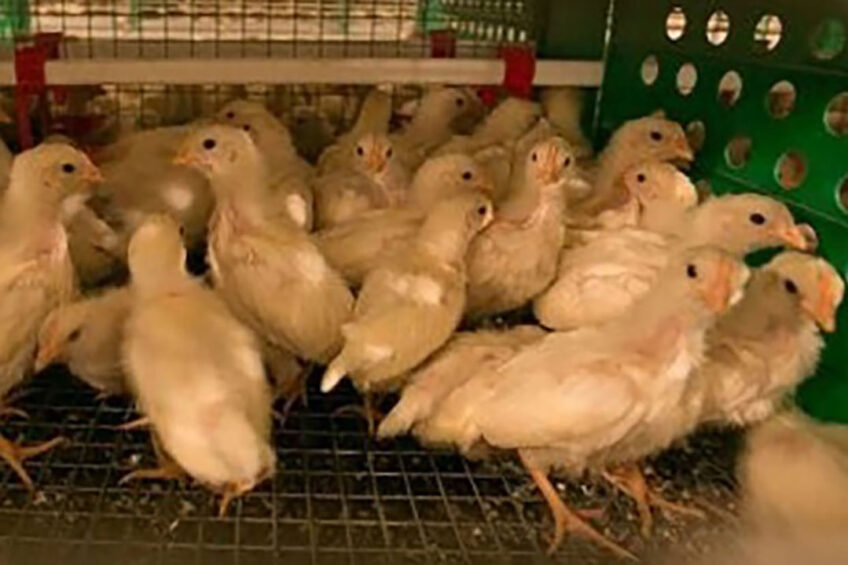
Russia’s Smena-9 crossbreed. Photo: Igor Sakharov
New tests of the Russian Smena 9 crossbreed have been launched by 5 poultry farms, hoping to confirm its presumably high production potential, Sergey Lakhtyukhov, general director of the Russian national union of poultry producers, disclosed, speaking during the AGROS-2023 industry conference in Moscow.
New trials have been launched by leading Russian poultry producers, Lakhtyukhov said, expressing confidence that they could show “the real figures and performance of this crossbreed”. The Russian poultry industry generally expects Smena 9 to be superior on 70 production indicators compared with the most popular imported crossbreeds, and almost twice as cheap.
A failed attempt
The result of the previous trials of Smena 9 appeared to be discouraging, though the exact figures have never been disclosed.
Lakhtyukhov explained that those trials were carried out in “inappropriate conditions”. In particular, he said that last time, Smena 9 chicks were placed in old poultry houses with poor animal welfare conditions and elevated veterinary risks.
In addition, during the previous trial, farmers had no opportunity to use feed specially designed for this crossbreed, Lakhtyukhov said. Russian scientists working on Smena 9 promised to make all necessary amendments for the new trials.
No time to waste
Although the trials are yet to be finished, the Russian government last year greenlighted the construction of a breeding centre for 5 billion roubles (US$80 million) to focus on Smena 9 in Moscow Oblast. Alexander Sergeev, president of the Russian Academy of Sciences, said that this venture was one of the most striking examples of the Russian “anti-sanctions actions”.
Moreover, Sergeev, speaking in August 2022, said that all poultry houses of the new breeding centre were expected to be finished by the end of the year, and equipment installation to begin in early 2023. He described the construction pace as frantic.
Hatching eggs imports drop
In 2022, the Russian poultry industry imported 400 million hatching eggs, 34% less than during the previous year, Lakhtyukhov said. The top 25 Russian poultry companies are self-sufficient in hatching eggs. There is no problem with hatching eggs supply to Russia, despite temporary production disruptions seen in 2022 due to avian influenza outbreaks in Europe. In December, there was even a 15 million surplus, which forced some companies to destroy hatching eggs. Russia currently imports hatching eggs from Slovakia, Hungary and Turkey, he added.
This year, Russia is expected to further substitute imports in this segment, Lakhtyukhov said, not specifying whether Smena 9 will play any role in this trend.
Sustainable dairy: Establishing net-zero farms
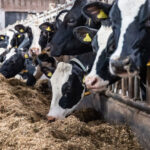
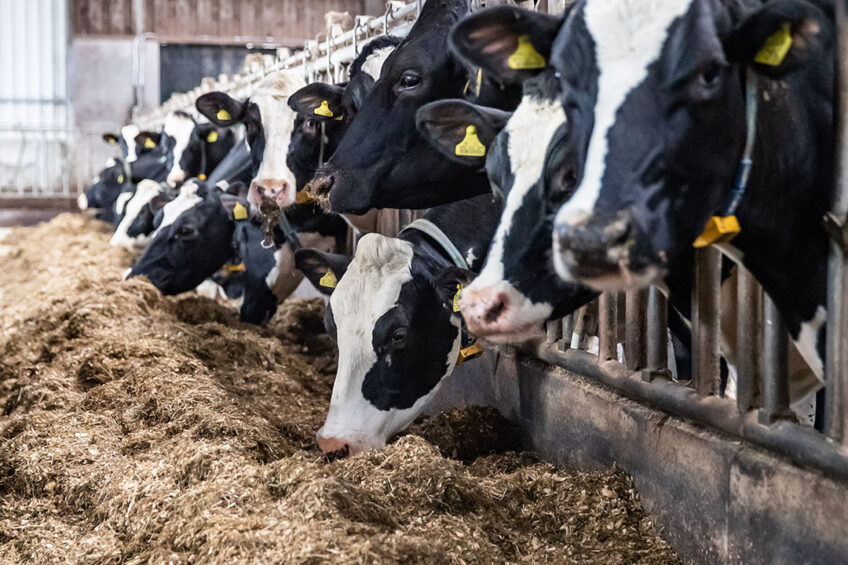
Farmers hold a unique power to be an innovative part of the solutions to climate change. Photo: Ronald Hissink
In the UK, 2 pioneering dairy and suckler farms are part of a group of 5 that will accelerate and demonstrate their journey to net zero.
The 3-year project, led by green farming organisation LEAF (Linking Environment and Farming), and supported by the Co-op Foundation, will see farmers developing and implementing a range of sustainable, integrated farming practices.
They will focus on soil, water, air and nature to gain a better understanding of the levers for change for addressing net zero and environmental enhancement. In return, they will receive training, mentoring and technical support from external consultants and LEAF’s technical team with a focus on reducing greenhouse gas emissions.
The farmers will be working towards joining the LEAF network as its first net-zero demonstration farms and to act as hubs for training and inspiration for other farmers as they begin their transition to net zero.
Vicky Robinson, LEAF technical director, said the ground-breaking project would support forward-thinking and innovative farmers with the tools, training and technical know-how to work towards these targets, collaborating and learning from each other.
“Farmers hold a unique power to be an innovative part of the solutions to climate change. We are hugely grateful for the support of the Co-op Foundation, which will enable us to drive forward more climate-positive farming and food systems for the future health of our planet,” said Robinson.
Dairy farmers
Rachel and Richard Risdon are tenant farmers on a 150-hectare dairy farm, running a grass-based herd of 300 Friesian x Jersey cows at Bramford Speke, near Exeter, Devon, supplying milk to Arla, which has mapped the carbon footprint of the raw material from the farm.
Grass at Bramford Speke is mainly ryegrass with clover. The spring-block calving herd yields about 5,000 litres per cow. Cows are grazed rotationally on a New Zealand-style paddock system, staying outside on the clay loam over river gravel soil until late November.
The couple run a low-cost system with cows once fully housed being self-fed silage, with each consuming about 1 tonne from an open clamp face and a cake-based blend of wheat and sugar beet pulp. Cows go back out once they calve in February with about 3-5kg of concentrate and no silage.
Rachel, also a practising vet, and Richard are an innovative couple bringing their experiences of farming both in the UK and New Zealand to shape their practices today. They are keen to understand more about their carbon footprint, how to protect water courses and encourage more biodiversity on-farm.
Located in the Scottish border, Stuart Mitchell, along with his wife Kate and parents, farm a 442-hectare mixed organic farm, including 140 suckler cows with a herd of breeding deer and 50 hectares of arable land. Already incorporating low-intensity practices, the family are keen to find the right balance of productivity and understand more about their organic system on the route to net zero and beyond.
The other farmers are upland sheep farmer Bob Clark, who runs a pure-bred flock of 200 Herdwick ewes plus a flock of draft ewes crossed with Texel and Cheviot tups; fourth-generation carrot and parsnip business Huntapac, which farms 1,300 hectares from Norfolk to Inverness, and Alan, Graeme and Valerie Whyte, who farm 2,000 hectares of avocados, macadamia nuts, pecans, timber and woodland in Northern Limpopo, South Africa.
NFU approach
The UK’s National Farmers’ Union has set the ambitious target of reaching net zero greenhouse gas emissions across the whole of agriculture in England and Wales by 2040. Jonathan Wilkinson, NFU Cymru Dairy Board chairman Jonathan Wilkinson said the industry would do this through:
- Boosting productivity – for example his cows wear monitors allowing him to track their well-being and adjust their diets and farm practices.
- Carbon sequestration
- Renewable energy – his farm works with neighbouring holdings to supply slurry to mix with their poultry manure, to produce 1MW of electricity through anaerobic digestion. This produces valuable nutrients in the form of digestate, which reduces the need for artificial fertilisers.



